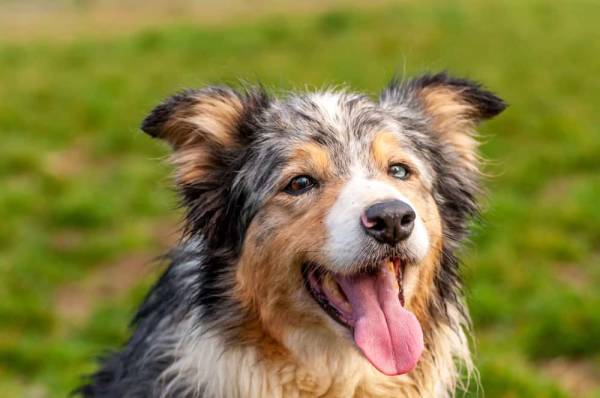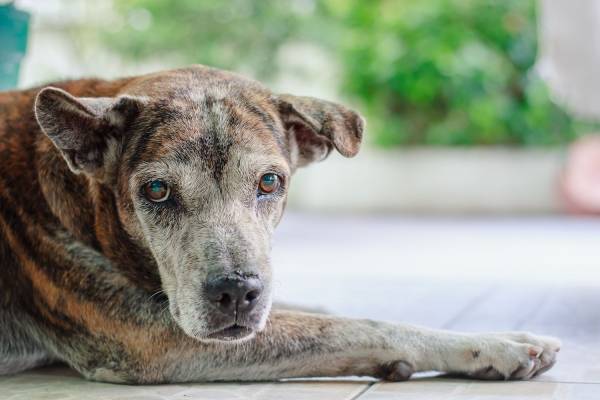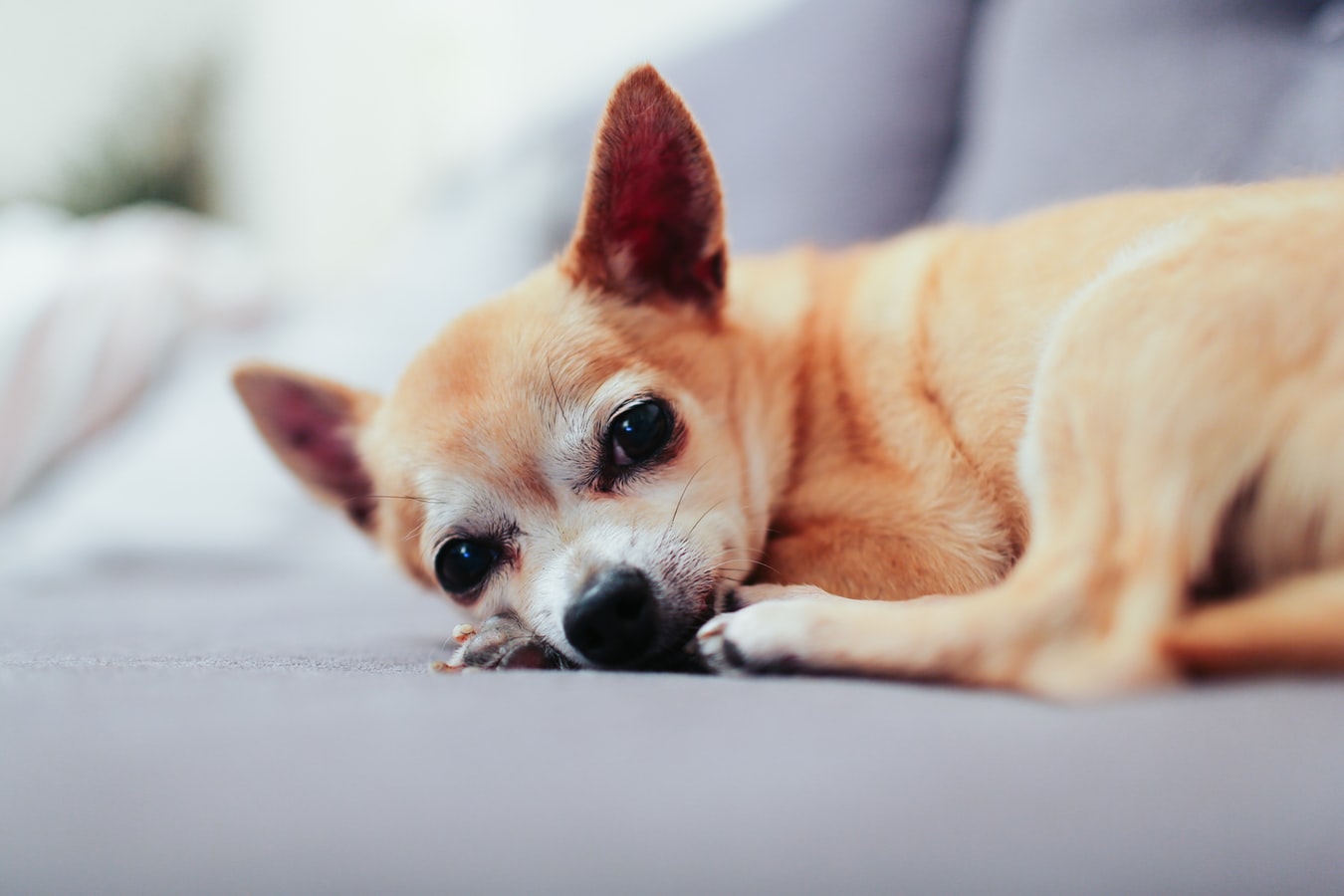We all know that regular exercise is important for your beloved companion. Not only does it make them happy and give them the chance to explore the world, but it also makes sure they stay healthy and fit.
Connect with a verified veterinarian in minutes. Licensed vets are available 24/7 to answer your questions. No need to worry about your furry family member.
But we all know that there are some risks when you exercise your pooch often. For example, if your dog loves to sprint and jump in the air, they may be at risk from a hock injury. This may not be something you are familiar with until it happens to your canine. Let’s learn more about hock injuries, dislocation and instability so that you know the right thing to do for your beloved companion if they get hurt.
What is a Hock?
One of the most common injuries that dogs of all breeds suffer from is a hock injury. Of course, you may be wondering; what is the hock on a dog? This is basically like an ankle on humans. This is the part of your pooch that attaches their paw to the shin bone and you will find it below their knee on the rear legs. You may also hear the hock called the tarsal joint. Due to the anatomy of the hock, it is susceptible to injuries from exercise and playtime. Let’s take a look at the types of juries you can get and how they happen.
The Hock Injuries Your Dog May Have
There are several hock injuries that can happen to your pooch that you will have to be aware of. Once you learn about them, you should be able to spot the symptoms. For example, it is a possibility that your dog has dislocated their hock. This is when a tear or a fracture of the bone occurs. Hock ligament tears often happen when dogs are running around or enjoying playtime and suddenly stop. This sudden reaction can mean that tears development. In addition, this injury is seen when there is an accident. For example, your canine could be involved in a car accident where they are hit or even just accidentally falling over them in the house.
It is possible that your pup has sprained their hock or has a muscle pull. This can be when they are running and their paw goes down a rabbit hole or they accidentally trip when they are playing. This is known as a sprain and can lead to limping or lameness. While it is a minor injury, it can still cause some discomfort for your pooch. They might not be a need for surgery and this can be something that rest and recovery can help.
But it is best to get your dog’s injury checked at the vet to make sure that this is the case.
What might start as a small injury can soon turn into a bigger one. For example, if your canine has sustained small tears to this ligament, over time this can become a big tear. It can mean that the ligament does not heal properly and eventually they will be in a lot of pain and it will affect their exercise levels. Again, consulting with your veterinarian is going to be the best option even if you think the injury is minor. It is always going to be better to have the injury checked even if rest is required. You can enjoy peace of mind and know that you have done everything you can for the comfort of your beloved companion.
It is also possible that your pooch could have osteochondritis dissecans of the hock joint. This condition is often shortened to OCD. This is an inflammatory condition that normally happens when your dog is young. It is when cartilage becomes separated from the bone. Not only can this happen at the hock, but it can also become present at the hip and elbows. In particular, large dog breeds can be at risk from OCD, as well as those with hormonal factors and diet that are high in calcium. The symptoms are going to be the same as other hock injuries. But you may feel like there was not one incident you can link the injury to.

Review symptoms, medications & behavior to keep your pets healthy with a Vet Online in just minutes.
Ask a Vet Live NowSigns Your Dog Might Have a Hock Injury
There are going to be several signs that show your dog may have a hock injury. You will need to pay attention to your pooch and know their normal habits. For example, you might notice lameness in the rear leg when they are walking. They may also not be able to run and play like they usually do or practicing a slower pace when they are out on their walk. Anything out of the ordinary is going to be a sign that something is wrong and requires a trip to the vet.
Another sign to watch out for is if your canine is changing position a lot when they are sitting down. They may even be extending the leg that is causing them problems and sitting with it out. If they do not normally do this, it might be time to call your veterinarian. Again, watch how often they are doing this. Of course, if it is a one-off, they may be fine. But if it is all the time, it is time for an appointment.
Generally, dogs that have a hock injury will display some signs of pain and discomfort. They will not be their normal self around the house or when they are out for their walks. They can also display some swelling in their leg for the area that is affected.
Treatment for Your Dog’s Hock Injury
First of all, if you think that your dog has any of these types of injuries, you need to arrange an appointment with your vet. They are going to be able to confirm your suspicions. They have the equipment that is needed, such as carrying out stress x-rays and blood work if this is necessary. They can also carry out physical examinations and know what they are looking for. In some cases, surgery may be the necessary treatment for your furry friend. This will involve using pins and wire to help with a fracture that has developed. If there is a torn ligament, surgery will involve using screws to help. Again, your vet is going to be able to advise you on whether surgery is going to be the best option.
If your dog has been diagnosed with OCD, there is a surgery that can help them. You must make sure that you catch the symptoms of OCD quickly in order to help your pooch. Otherwise, irreversible damage may occur to the joint that you will not able to help. The surgery consists of removing the OCD lesion that may be causing lameness, limping and discomfort in your pooch. Once this lesion has been removed, this is going to allow the space to form cartilage.
This is going to make sure that your pooch can lead a happy life. But there is the possibility of arthritis occurring, which we will discuss later on.
In other cases, non-surgical procedures can be advised. This can include taking medication, which can help your pup with pain and swelling. Arnica might be recommended if your dog has soft tissue injuries. Acupuncture and chiropractic care can be good for your four-legged friend too. There are some other things you can do in the meantime before you are able to arrange a vet appointment. For example, if your dog has some swelling on their leg, you can help to reduce this by applying cold packs. Hold these cold packs against the hock for around 10 to 15 minutes at a time. You can do this around four times a day for some relief. As a preventative measure for the future, you can give your dog glucosamine supplements. This can help to keep the joints strong and it may help to reduce some discomfort for your pooch.
Using Hock Braces For Dogs
There are a lot of owners that speak very highly of hock braces. This is an orthopedic device that may be able to provide some relief for your pooch. They are actually designed to protect this part of their leg and it can help to prevent further injuries and sprains from occurring. In addition, it can provide relief from any discomfort they may be feeling from existing injuries.
How does a dog brace work? Essentially, the ankle wrap is going to support the hock and fit the natural angle. This is going to help stop any hyperextension. If your canine suffers from instability, this orthopedic device will hold the joint in position. This allows for new scar tissue to grow and help.
Before you try to treat your dog’s injury by yourself, it is always best to consult your veterinarian. They have the knowledge and experience to know what is best for your pooch. This way, you can ensure that you are helping your canine and not hindering their recovery. In addition, it is going to speed up the process so that your dog can enjoy running around and playing like they normally do.
How to Avoid Dog Hock Injuries
While you cannot completely avoid your dog developing a hock injury, there are some things you can do to lower the risk of them happening in the future. Of course, you could limit your dog’s exercise and prevent them from running at great speeds. But this is unlikely going to be fun for your furry friend. Perhaps you can watch the places you take them for an adventure. For example, you might want to avoid somewhere that you know has a lot of rabbit holes or uneven surfaces. If you are near roads or busy areas, put your dog on leash to avoid any accidents.
Make sure that your pooch is a healthy weight. If your canine is obese, this can put more pressure on the hock. This might mean that problems could develop that could have been avoided if your companion was a healthy weight. Your dog will also benefit from a healthy diet. This can help to keep bones and joints healthy. For example, raw diets have been hailed as a good way to keep your pup fit and healthy. There are also joint supplements that you can purchase for adult and senior dogs.
Possibility of Future Problems
You may think that your dog’s torn hock ligament was a problem of the past after surgery and treatment. However, this is not always the case. It is quite common for pooches that have had this injury to suffer from arthritis later on. You will know if this has happened because your dog’s legs may be stiff, especially when they have been out playing fetch or after a walk. In addition, they can be uncomfortable when they are sleeping and be slow to get up after a nap. You can always ask your veterinarian for ways to ease your dog’s discomfort from arthritis. This can involve pain-relieving medication.
There is also the possibility of problems occurring after surgery. For example, there have been some stories about screws breaking. While this is probably a rare occurrence, it is important to be aware of it. In addition, due to the use of implanted screws, some furry friends have become sensitive to the cold. You may have to purchase a coat for walks or fluffy blankets for in the house so they keep warm.
Of course, nobody wants there to be future problems with their pup. But these side effects should not discourage you from seeking treatment for your furry friend. If hock injuries are not treated, they can mean that your dog continues to suffer from limping, lameness and pain. It will stop them from enjoying their favorite activities, such as running and playing fetch. Therefore, always seek the advice of your veterinarian if you suspect that your dog has a hock injury. They are going to be able to advise you on the best way to treat your pup.
Connect with a verified veterinarian in minutes. Licensed vets are available 24/7 to answer your questions. No need to worry about your furry family member.

Kim
Kim is a talented author, who loves animals especially dogs. She engaged in writing books and articles relating to animals a decade ago. Kim resides in Chicago with her husband and son. The family is the proud owner of a dog and a parrot (Jack and Lily). Kim wanted more than these two pets, but her husband put his foot down... She often visits elementary schools to talk to the kids about what she learned about pets and how they could learn from them.
Review symptoms, medications & behavior to keep your pets healthy with a Vet Online in just minutes.
Ask a Vet Live Now



